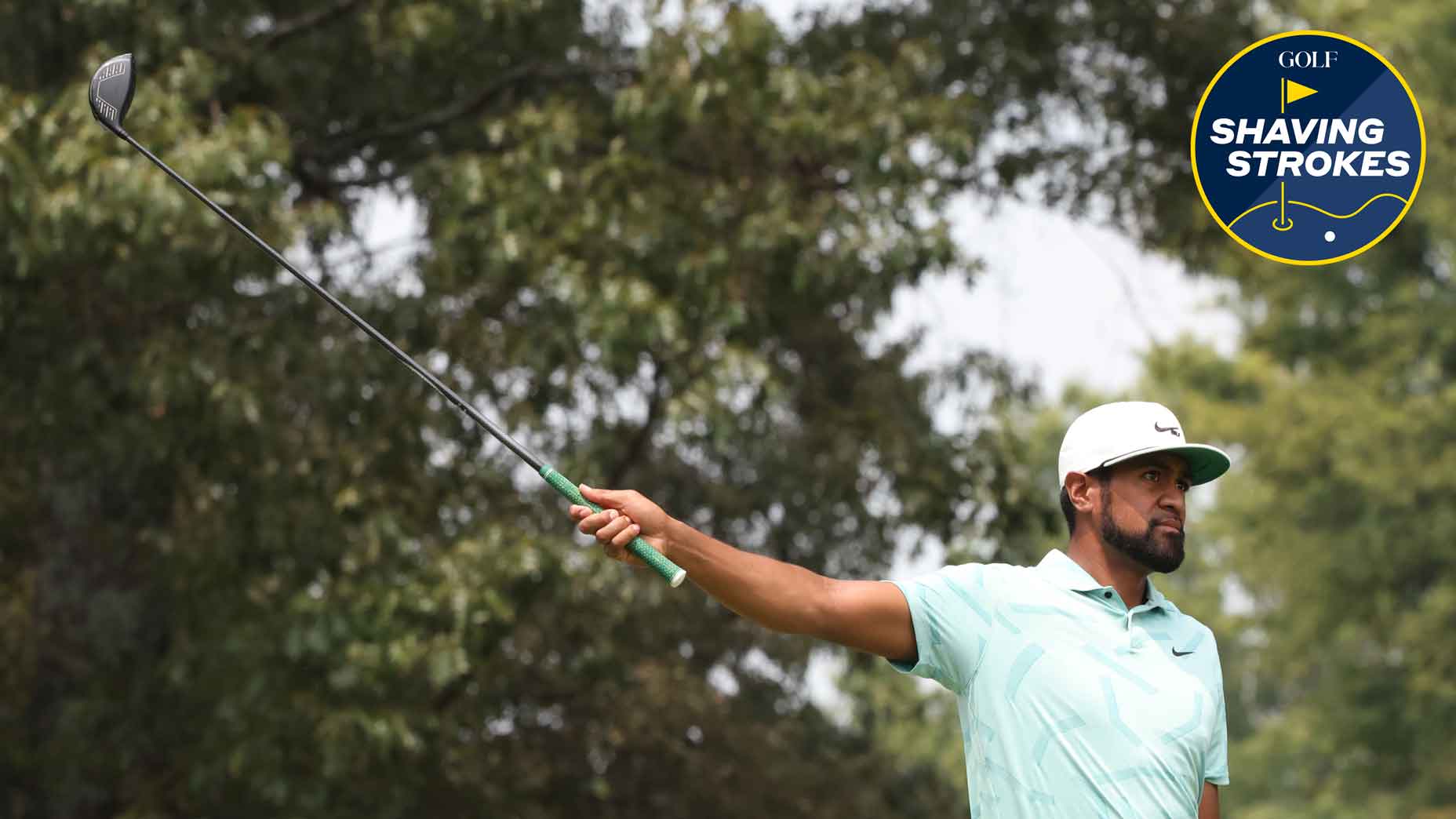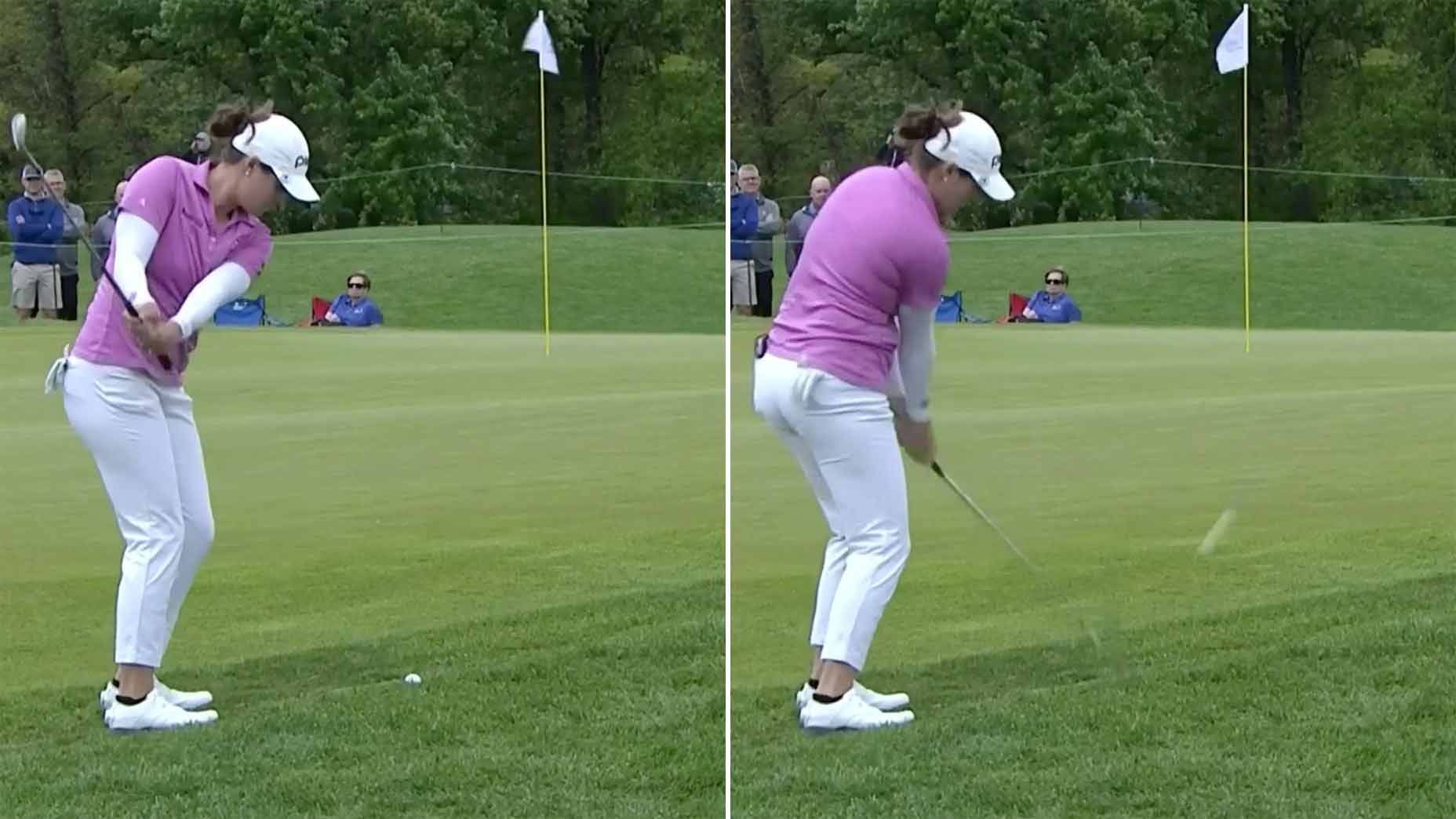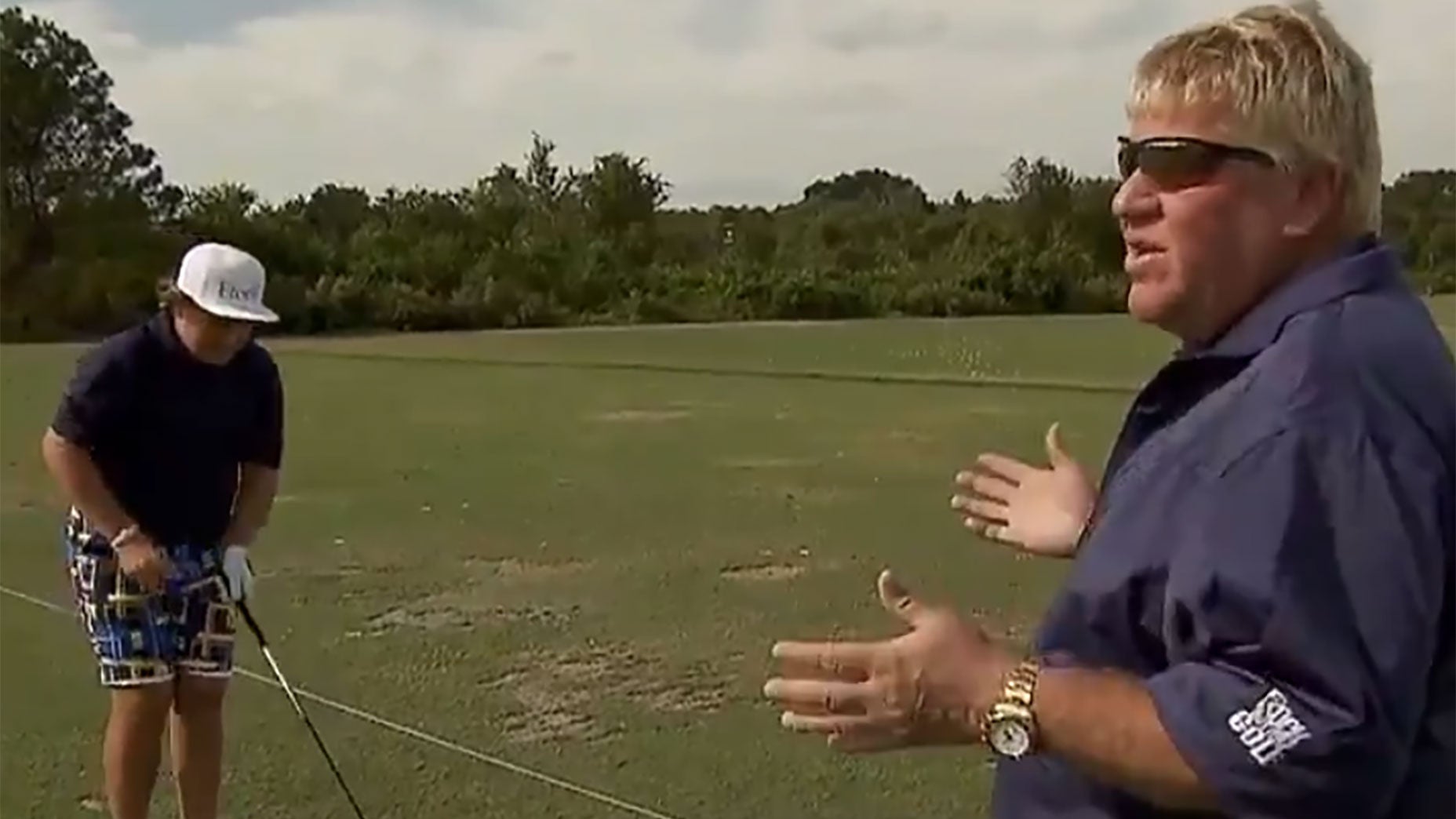So you’ve got the affliction every golfer fears: the shanks. Take two aspirin and go to bed!
Just kidding, but the shanks are no laughing matter. But even so: don’t let the shanks freak you out. Even Tour players hit the occasional shank. The key is understanding why you shanked so you can prevent one from happening again.
And to do that, you need to understand that there are two ways that golfers hit the infamous hosel rocket, each with their own causes.
1. The in-to-out shank
Otherwise known as the “better player” shank, or the “heel” shank. This happens when your clubhead swinging on a path that is too shallow, on a severe inside-to-out, which means the hosel is moving directly towards the ball
To solve this, you’re going to need to steepen your downswing, and move your path so it’s less in-to-out. At address, try tilting your spine more towards the ground. This should help you make a steeper shoulder turn and and allow your arms to lift higher. This will help steepen your downswing, move your path more to the left, and keep the hosel further away from the ball.

2. The over-the-top shank
Otherwise known as the “outside-in” shank. This is where the heel of the club is moving across your target line, often due to your hands tossing and flipping the clubhead through impact. This severe outside-to-in clubhead path is the opposite of the first shank. Rather than being caused by a swing that’s too shallow, your swing is too steep.
Therefore, to fix this kind of shank, you’re going to need to learn to shallow the club.
But remember that these are only temporary solutions. So while these may help in the short-term, the best long-term solution to the shanks is to get a lesson with a good coach.










